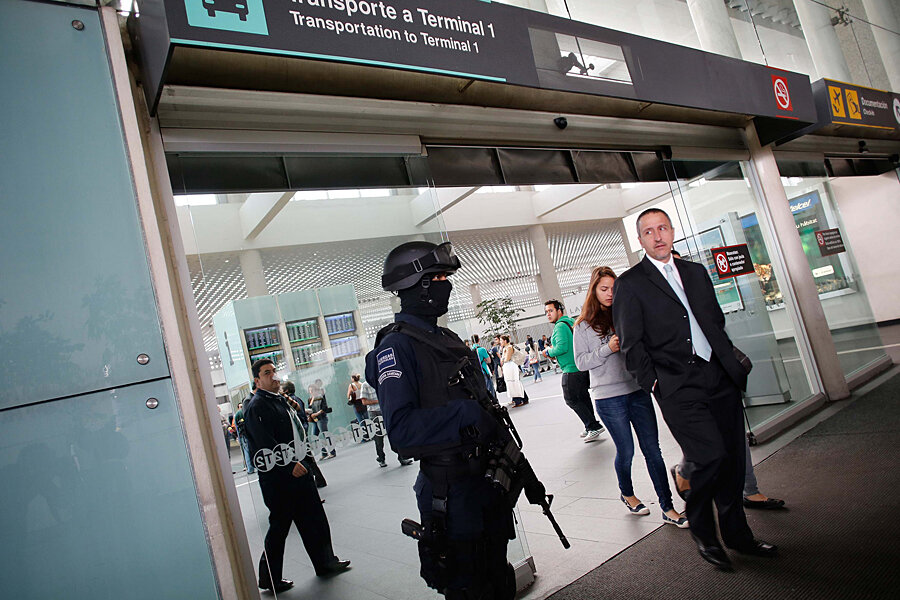Ready for landing: Mexico City airport expansion could make it one of largest in world
Loading...
| Mexico City
President Enrique Peña Nieto announced plans Tuesday to build a new airport in Mexico City that can handle four times the traffic of the existing one, the second busiest in Latin America.
The new airport will have six runways and is projected to cost $9.1 billion.
President Peña Nieto said the airport “will be the biggest infrastructure project in our country in many years and even one of the biggest in the world.”
It will be built on vacant federal land to the east of Benito Juarez International Airport, which handled about 31.5 million passengers last year.
Peña Nieto, in a 90-minute annual address to the nation, said Mexico couldn’t keep “postponing a solution” to the overcrowding at the capital airport, which regularly exceeds its operating capacity.
The bottlenecks at the airport “restrict movement around the country, limit Mexico’s ties to the world, put a brake on trade and investment, and create delays for users,” Peña Nieto said.
When engineers finished work on the existing airport in 1952, the capital had only 3 million residents. Since then, the metropolis has swollen to more than 20 million inhabitants, partially engulfing the airport, which occupies a dry lake bed.
A second terminal was added in 2007, but only two runways serve both terminals and they can’t be used simultaneously. The airport, which is Latin America’s second busiest, after Sao Paulo’s Guarulhos International Airport, has surpassed the 340,000 annual takeoffs and landings experts say it’s capable of handling, hitting 389,226 last year.
That means aircraft take off and land at a pace of nearly one per minute during peak periods. The airport is less than three miles from the capital’s main square, and the standard landing approach has jetliners skimming over the city.
An annual report given by Peña Nieto’s government to Congress on Monday didn’t say how long it would take to build the new airport, which will arise on some 12,500 acres of mostly vacant land around the largely dry Lake Texcoco that’s contiguous to the current facility. [The new airport will be near the site where the Mexican government attempted to build a new airport in 2002. It failed after local farmers, wielding machetes, launched protests over the expropriation of their land for the new airport.]
Once built out to a capacity of 120 million passengers a year, the new airport could be one of the largest in the world, depending on the pace of growth at busy airports in places such as Chicago, Dubai, Beijing and Atlanta. Atlanta’s Hartsfield-Jackson International Airport, the world’s busiest, handled 94.4 million passengers last year.
The Mexico City airport handles a third of air passengers in Mexico and more than half of all airfreight. It’s more than twice as busy as the airport in the Caribbean resort city of Cancun.
The Mexican Institute on Competitiveness, a research center that promotes free-market ideas, issued a report last week demanding action on expanding the airport.
“The current maximum capacity of the airport is 32 million passengers. But last year, it moved 31.5 million!” the institute’s report said. “We’re facing an undeniable reality: Our airport has reached full capacity.”
Peña Nieto said his government would offer more details about the new airport Wednesday.
It’s already studied bids for the design, including one from British architect Norman Foster, who drew up plans for Beijing’s international terminal, the world’s largest at the time of construction.
Additional reporting contributed by The Christian Science Monitor.







